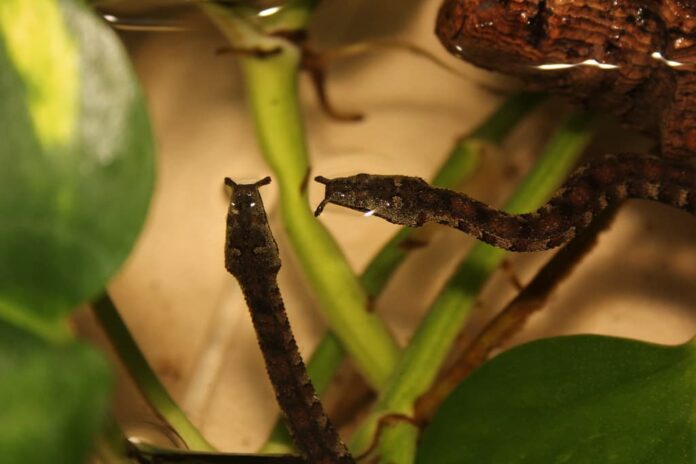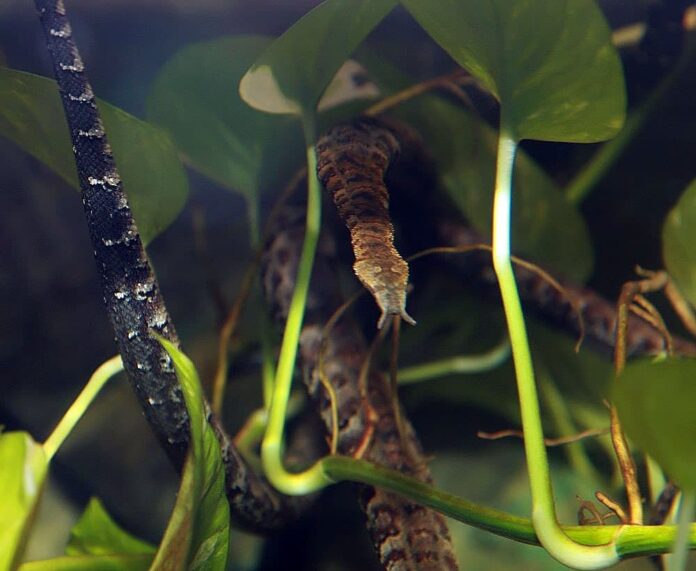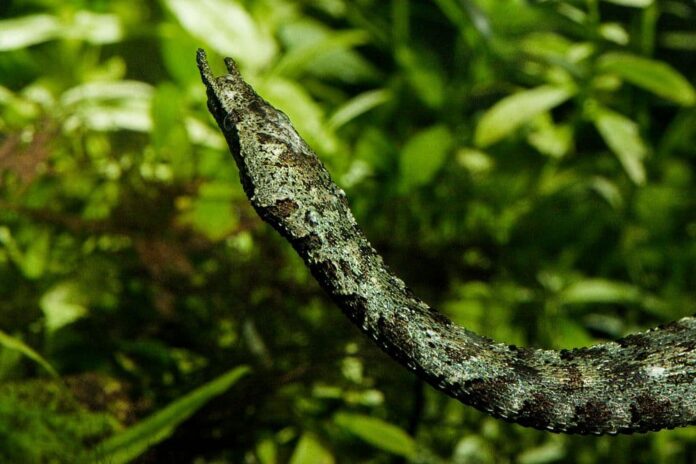The name sounds a bit confusing, hey? A tentacled snake does not have any limbs, the name refers to the two tentacles on its snout. That is not what you see in a snake, and this is why we are talking about them today. Being the only snake species that has a pair of tentacles on the front of its head makes it fascinating. Want to know more about them? Check out some more information below.
1Appearance

Growing to just around 50 to 90 centimeters, a tentacled snake is quite a small reptile. Its head and body are extremely flat while its color and pattern make it look like a branch or twig. Naturally, there are two color phases: blotched and striped, ranging from dark gray or brown to tan.
The most distinctive part about the tentacled snake is the twin so-called tentacles on the front of its head. It is the only snake species that possesses this feature, and their tentacles have a mechanosensory function that helps with hunting. The tentacles contain nerve cells that allow them to sense prey in muddy water because their eyes are useless there. Does a tentacled snake have venomous fangs? Yes, but the fangs are small and the venom is not dangerous to humans.
2Behavior
I hope the cute music makes it less cruel
Tentacled snakes are aquatic snakes, and they can stay underwater for up to 30 minutes which is quite impressive. Their nostrils are dorsally positioned, and they have a special tissue that allows them to close the nostrils when staying submerged. On land, they can move but they look very awkward and they are simply helpless. In the dry season, they bury themselves in the mud until the rainy season returns.
Despite being small, these snakes are actually ambush predators with their own unique method. Normally, a tentacled snake uses its tail to anchor itself underwater while its body does the upside-down “J” shape. It will remain in this posture even if you grab, move it around, or remove it from the water. Being in this posture allows a striking range within a narrow area downwards from its head. So when a fish swims within that range, the snake will strike by pulling itself down in one quick motion. The most interesting part? These snakes know where to aim, and that is the fish’s head; making venom injection more effective.
3Feeding & Habitats

Being an aquatic snake, tentacled snakes spend their entire life in murky water where their diet consists solely of fish. Though extremely rare, they have been observed to feed on crabs and frogs as well. They are native to Southeast Asia, slithering across Cambodia, Thailand, and Vietnam. Their main habitats are lakes, rice paddies, and slow-moving streams as well as brackish, fresh, and sea water.
Related Post: Spider-Tailed Horned Viper Snakes




